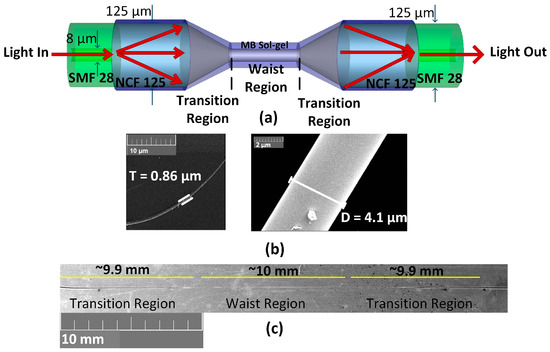How an Optical Fibre Diameter Analyser Improves Manufacturing Accuracy
How an Optical Fibre Diameter Analyser Improves Manufacturing Accuracy
Blog Article
Maximize Your Fiber Optic Performance: Comprehending Optical Fiber Size Analyser Technology
The efficiency of fiber optic systems is seriously influenced by the precision of their size, a variable typically neglected in the search of ideal signal integrity. Understanding the technology behind optical fibre size analysers discloses the elaborate balance between dimension precision and production high quality.
Significance of Optical Fiber Diameter
The diameter of optical fiber plays an essential function in figuring out the performance and efficiency of communication systems. Conversely, smaller sizes have a tendency to support less modes, which can improve signal clearness and minimize crosstalk.

In addition, comprehending the diameter's effects can lead to set you back financial savings by lowering the demand for signal amplification and repeaters in considerable networks (optical fibre diameter analyser). In conclusion, the value of optical fiber diameter can not be overemphasized, as it directly affects the general efficiency and reliability of modern interaction systems

Exactly How Size Affects Signal Quality
Signal high quality in optical fibre systems hinges substantially on the diameter of the fiber. The size influences numerous key specifications, including depletion, data transfer, and modal dispersion. A smaller size can cause greater attenuation rates, leading to signal loss as light travels through the fiber. This depletion can jeopardize the stability of the transmitted information, leading to a decline in signal quality, specifically over fars away.
On the other hand, larger sizes typically permit for boosted light capture and decreased modal dispersion, boosting signal clarity. In multimode fibers, a larger core size can sustain multiple light settings, but it may also present intermodal dispersion, which can weaken signal top quality. Picking the optimal fiber size is vital for achieving the desired performance in particular applications.
In addition, the communication between the fiber size and the wavelength of the light used plays a vital role in figuring out the reliable transmission distance and overall signal honesty. Because of this, understanding just how fibre size affects signal quality is necessary for network developers and designers striving to maximize optical fibre systems for trustworthy, high-speed data transmission.
Overview of Size Analyser Innovation
In many optical fibre manufacturing procedures, precise measurement of fiber size is necessary for making sure constant performance and top quality (optical fibre diameter analyser). Diameter analysers are innovative instruments designed to assess the physical dimensions of optical fibers with high precision. They employ innovative optical and laser technologies to determine the size, ovality, and concentricity of the fibre, therefore offering critical data for quality assurance
These analysers can operate in-line during the production procedure or as component of off-line testing procedures. In-line systems make it possible for real-time monitoring, allowing producers to adjust parameters promptly, thus keeping optimal production problems. Off-line analysers, on the other hand, give comprehensive assessments of sets, making certain that any discrepancies from specified tolerances are identified and dealt with.
Size analysers considerably add to the decrease of problems in optical fibres, improving general product reliability. By regularly measuring essential criteria, these innovations facilitate conformity with market requirements and specifications. As check my blog the need for high-performance optical fibres continues to climb, the function of diameter analysers becomes increasingly vital in attaining the preferred top quality and performance criteria in fibre optic systems.
Key Attributes of Fiber Diameter Analysers
Although numerous models of fibre size analysers exist, they frequently share a number of key attributes that improve their performance and dependability. Among the most considerable features is high-resolution measurement capacities, which make sure precise diameter readings, critical for keeping quality control in fibre manufacturing. Furthermore, several analysers include advanced optical sensing units made to detect minute variants in fibre diameter, thus offering invaluable information for process optimization.
One more vital attribute is real-time surveillance, allowing drivers to receive instant feedback on fibre diameter throughout the production procedure (optical fibre diameter analyser). This capacity promotes rapid adjustments and lowers the possibility of flaws. Many analysers also come geared up with easy to use user interfaces, enabling operators to conveniently browse via information and settings outcomes
In addition, robust data storage space and evaluation functionalities are crucial for tracking historical performance patterns and making sure compliance with sector criteria. Some versions even provide connectivity choices for combination into existing manufacturing control systems, boosting overall operational effectiveness. Last but not least, portable and compact layouts permit for adaptable deployment within production environments, making certain check these guys out that high quality guarantee procedures are seamless and reliable. These functions jointly contribute to the efficacy of fiber diameter analysers in optimizing fibre optic efficiency.
Best Practices for Fiber Optimization

First, routine calibration of optical click over here now fibre size analysers is necessary. This guarantees accurate measurements and decreases prospective disparities that might influence efficiency. Next, maintaining a clean working atmosphere is crucial; dirt and impurities can lead to indicate degradation.
In addition, it is very important to select fibers that meet details application requirements. This entails assessing variables such as attenuation, data transfer, and ecological conditions. Proper setup techniques should likewise be complied with, consisting of staying clear of sharp bends and too much stress, which can endanger fiber honesty.
Furthermore, employing sophisticated tracking systems can assist in real-time performance evaluations, making it possible for punctual identification of issues. Regular testing and upkeep must be performed to make certain that fibers stay within optimum functional parameters.
Finally, training employees on the latest fibre optimization modern technologies and approaches will enhance their capacity to implement effective approaches. By complying with these ideal methods, companies can dramatically improve the performance and lifespan of their optical fibre systems, guaranteeing efficient interaction and data transfer.
Verdict
In conclusion, the assimilation of optical fiber diameter analyser innovation is essential for making best use of fiber optic performance. By making certain accurate measurements of fiber dimensions, these analysers significantly boost signal high quality and reduce losses during data transmission.
Signal quality in optical fibre systems hinges significantly on the diameter of the fibre.In several optical fiber manufacturing procedures, accurate measurement of fibre size is vital for making certain regular efficiency and quality. As the demand for high-performance optical fibres proceeds to rise, the function of diameter analysers ends up being increasingly essential in achieving the desired quality and efficiency criteria in fibre optic systems.
These features jointly add to the efficiency of fiber size analysers in optimizing fibre optic performance.
In final thought, the combination of optical fibre diameter analyser modern technology is essential for optimizing fibre optic performance.
Report this page